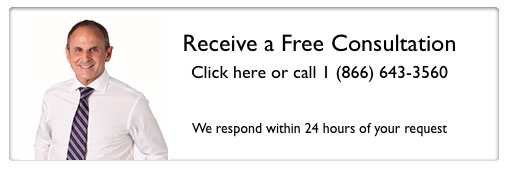
As an employee, you may wonder what happens when your personal car is used for business-related trips. If you’re on a work trip, it’s only fair that your employer shoulders some of the costs. First, your employer should have a business mileage reimbursement policy, and you should know what’s in it.
There’s no federal law governing mileage reimbursement, but several states have legislated their own laws. As an employee, you should know the kinds of trips you can claim and how much can be compensated. This way, you can keep track of business mileage and enjoy the tax benefits that come with it.
Read on to learn more!
How Mileage Reimbursement Works
Your employer can handle your mileage expenses in one of three ways:
1. Actual Expenses
Here, you track how much you actually spend on tolls, parking fees, gas, and meals during the trip. The disadvantage is that you don’t account for vehicle wear and tear/depreciation using this method.
2. Fixed Allowance
Here, the employer gives a fixed sum to cater for fuel, depreciation, maintenance, and other expenses. However, this allowance isn’t tax-deductible for you, and your usage could exceed the amount given.
3. Mileage Reimbursement
Here, you’re required to track distance covered on all business trips. You then submit your travel expense sheet with the starting and ending odometer readings. Personal trips are not refundable, including personal detours during the business trip.
How Employee Expense Reimbursements are Qualified
Before you can claim mileage reimbursements, your employer must have an “accountable plan”. This is basically an advance payment program or reimbursement policy, and it must meet these criteria:
- Business connection – meaning that the expense is in service of the employer
- Substantiation – meaning you must give evidence of amount, place, time, and business purpose. Also, you must claim within a reasonable period after incurring the expense
- Return excess amount – if the employer uses advance payment, any amounts exceeding the expenses must be returned promptly
If you are paid according to the accountable plan, the reimbursement isn’t part of your income or wages. The employer will also be able to deduct this amount from their expenses, reducing their tax burden.
Without this plan, reimbursements will be taken as supplemental wages, and you must pay taxes on them. Even with a plan, if you fail to substantiate your expenses within a reasonable time or return any excess, the amount becomes taxable.
What’s more, business expenses according to IRS Publication 535 must be “ordinary and necessary”. Ordinary means that the expense is accepted and common within your industry. Necessary means that the expense is appropriate and helpful for the business.
The following are common expenses allowed for mileage reimbursement:
- Temporary work – travel expenses for temporary jobs (under one year) in your work
- Client visits – meeting clients away from the office
- Errands – going to get business supplies
- Meals and entertainment – mileage to meet clients for dinner, coffee or drinks
- Business events – going to fairs, workshops or tradeshows that benefit your business
- Airport – driving to and from the airport for a business trip
It’s worth noting that commuting between home and work cannot be claimed as part of business mileage.
The 2019 IRS Mileage Reimbursement Rates
The IRS assigns a standard rate, and it changes every year. The amount is based on studies of fixed and variable car expenses, e.g., depreciation, oil, gas, insurance, maintenance, etc. The reimbursements are given to employees tax-free, meaning they are not part of your taxable income.
Starting January 1st, 2019, these are the standard rates for vans, panel trucks, cars, and pickups:
- 58 cent per mile driven for business trips
- 20 cents per mile driven for moving or medical purposes
- 14 cents per mile driven for service to charitable organizations
These are simply federal guidelines, and so they can be exceeded, e.g., if tolls and/or gas are more expensive where you live. However, the amount exceeding the federal guideline is taxable, so you must report it in your annual returns.
Similarly, the employer may offer a lesser reimbursement rate if tolls or gas are cheaper in your area. This is usually rare, and they can only do that if they cover all your reasonable expenses at a lower rate. Some employers stick with the standard IRS rate as an incentive to encourage employees to stick around.
Illustration
Suppose you drove to a client 60 miles away, and afterward visited a friend who lives 10 miles farther. On returning, you have covered 140 miles, out of which 120 are business-related. Therefore, you can claim (120 x 0.58) = $69.60 for the trip.
Mileage Reimbursement Documentation
Before you can claim your mileage reimbursement, you must substantiate your claim by filing documentation that provides:
- The total mileage
- Dates of the business trips
- Places you went for business reasons
- The purpose for making each trip
- Total mileage driven for the year – including commuter, personal and business driving
Keeping an accurate log of your mileage is the best way to ensure the IRS grants your deduction. Without this log, you stand to pay additional penalties in addition to having your request denied.
Final Thoughts
It may be difficult to know exactly how much of your expenses can be reimbursed or tax-deductible. If you’re wondering how talking to a certified public accountant near you can help maximize your tax benefits.
Certainly, you will benefit from knowing the laws that apply to your state by visiting your state labor website. If your employer isn’t fulfilling his role, you can put them to task to ensure you’re not disadvantaged.
Keeping proper odometer readings as you move around is the best way to ensure you can substantiate your claims. Put a sheet in your glove compartment so that you note down every trip you make, personal and otherwise.
Finally, avoid mixing business trips with personal trips, as accounting can be more difficult during mileage reimbursement. For instance, don’t visit a friend while you’re on a business trip unless you’re sure how to justify that mileage.
Contact us today for assistance with your taxes.


